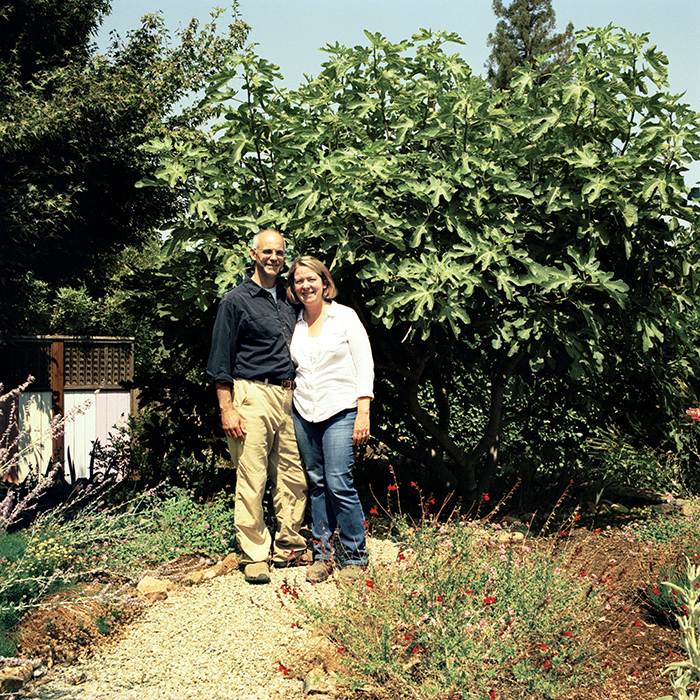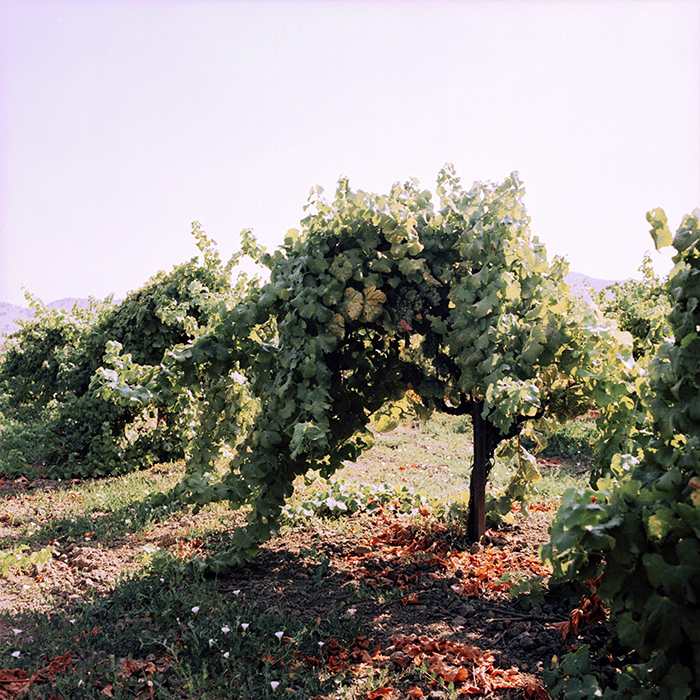A new side to Napa: DeSante
Author: Sophie Thorpe

Katherine and David DeSante sit in front of me and their excitement fills the room. Their words fizz with enthusiasm, each one leaping in eagerly to finish the other’s thoughts as they talk. In the Napa Valley – California’s most prestigious wine region and the homeland of cult Cabernet – the DeSantes stand out, not just for their pure passion, but for championing old vines and unusual varieties that others might have ripped up for a more profitable crop.
“You know, what we really love are these old vineyards and especially old, white vineyards, but old, red vineyards too had been disappearing in Napa. They get pulled out and get replaced with Cabernet,” explains Katherine. “It’s one thing if you take the grapes and they go into a huge blend and you never really see them, but those vineyards have a story to tell. We just wanted to do everything we could to preserve those vineyards and to give them an opportunity to show what they can do.” And that’s exactly what their wines do, capturing a real sense of these extraordinary vineyards.
Their pride and joy is Proof vineyard, a remarkable site that – until they happened upon it – wasn’t being used to make wine. The two ladies that farmed the plot – both the vines and the fruit trees that surround it – were picking the fruit for the nearby hospital. To this day, the fruit gets taken for the hospital first, and the DeSantes work with whatever is left behind to make their extraordinary wines. Planted to the likes of Sauvignon Vert, Green Hungarian, Alicante Bouschet, Petite Sirah and many other unlikely varieties, some dating back to the 1890s, the untrellised vines are almost tree-like, dry-farmed, and cared for sustainably, using methods that have been passed down the generations. They talk about the vineyard, and the ladies that farm it, with the affection normally reserved for close family.
While David had always wanted to be a winemaker, it only became his profession by accident. Growing up in Pennsylvania, he used to try to make wine in the kitchen sink – much to his mother’s horror. But it was Katherine’s family who introduced him to “fine wine”, sampling old vintages from Napa around the dinner table. He’d been destined to become a doctor in the US Navy, but – when they realised they had more doctors than were needed – he was offered the chance to retrain. Only then did he remember his kitchen-sink concoctions.
Katherine’s parents kindly gave them a bottle of Chalk Hill Chardonnay to take home one day, and David called the 1-800 number on the back, asking to talk to the winemaker. The winemaker – a man who happened to be our friend David Ramey – was in France, so instead David DeSante was put on the phone with Fred Furth, the owner, whom he asked, simply, how one went about becoming a winemaker. His next call was to the school of viticulture at UC Davis, which led to a visit, and soon enough, a move.
“We loaded up the moving truck and drove across the country,” Katherine says.
“Broke down three times, once in terrible rain…” adds David.
“The second time in the middle of nowhere in Arkansas,” laughs Katherine.
“Once our radiator burst in Arizona, remember that? We made it though.” David grins at Katherine.

Katherine worked two jobs to put David through school, working as a pastry chef by day, and an accountant by night. At the end of his degree, David was offered the chance to work at Château Lafite, but turned down the opportunity as Katherine wouldn’t have been able to go with him. Instead they moved to Napa, where David started a job with Robert Mondavi.
A harvest in Margaret River, Western Australia, working at Cullen and Pierro, nearly persuaded them to move across the globe, but they returned to Napa and, after an interlude making sparkling wine, eventually started consulting with small family wineries that needed help navigating the industry. But David wanted to start making their own wine – and after a long campaign to persuade her, which included lunch at the French Laundry – Katherine agreed to take the plunge.
Inspired by Di and Vanya Cullen, they started making Sauvignon/Sémillon blends, hoping they would also be able to save some of the vineyards in the valley that were being ripped out and replaced with Chardonnay – and things went from there. Gradually, they’ve started working with more vineyards – telling the stories of the Napa they know and love.
Eighteen years later, they still consult for other wineries and make a mere 1,000 cases under their DeSante label. They hope their wines are “something that slows people down, brings them together and starts a conversation.” That’s no small task in the modern world, but something the DeSantes’ wines effortlessly achieve. These are stop-you-in-your-tracks wines, bottles that refuse to be a mere accompaniment. Much like their makers, the wines are irresistibly engaging. As Katherine told me, “There could be no higher calling for a bottle of wine.” We can’t help but agree.


